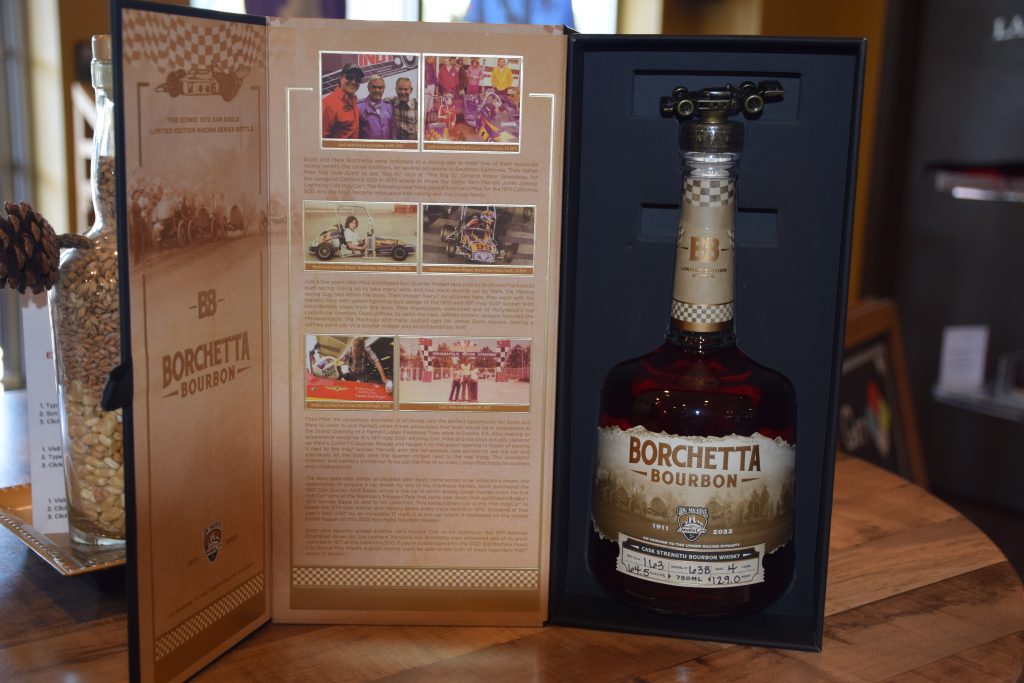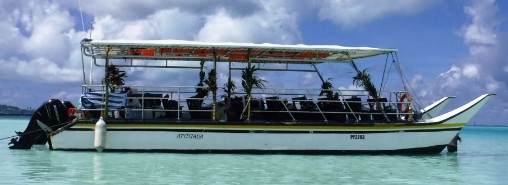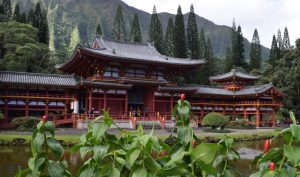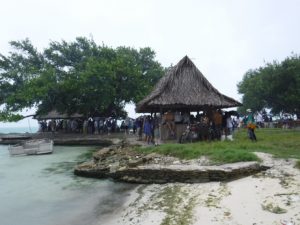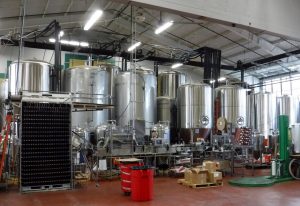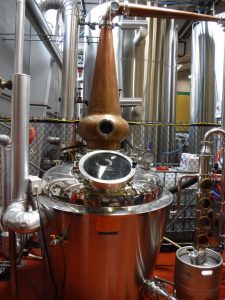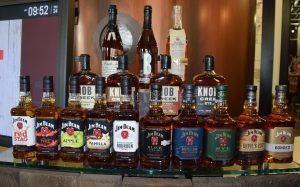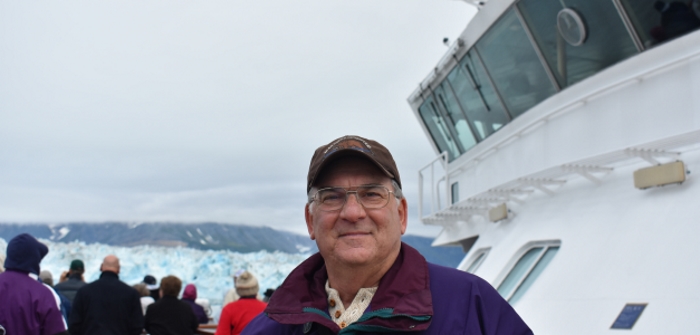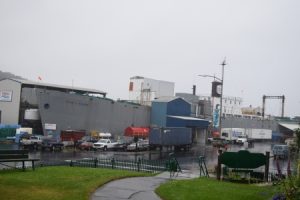Nearly a year to the day after I suffered a cardiac arrest during knee surgery, my wife and I embarked on a long-awaited bucket list cruise, Holland America Line’s 30-Day Atlantic Sunsets & British Isles cruise. The first leg of our journey was a transatlantic crossing from Fort Lauderdale, Florida, to Rotterdam, Netherlands. We left Florida on May 12, 2023, and arrived in Rotterdam on June 11, 2023. The second leg of our adventure was a two-week British Isles circumnavigation round-trip cruise from Rotterdam. Both cruises were aboard the MS Zuiderdam, and we enjoyed the comfort of the same cabin for the entire voyage. This cruise took us to France, Ireland, Portugal, the Netherlands, and the United Kingdom.
The Transatlantic Crossing
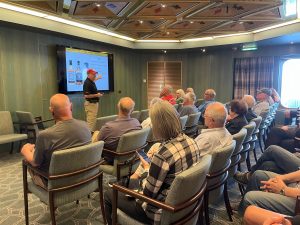
As always, we signed up for our cruise’s Roll Call on the Cruise Critic message boards. Connecting with fellow passengers enhances our cruise by providing a wealth of information, social opportunities, and practical benefits. All of these factors contribute to a more enjoyable and well-rounded travel experience. Our first Cruise Critic activity was an informal meeting at the Sea View Bar at the stern of the ship for sail away.
Several months before the cruise, I reached out to my fellow Cruise Critic travelers to gauge interest in learning about bourbon, America’s distilled liquor. Many expressed enthusiasm, so I arranged for the ship to provide us with a classroom setup during the first three days at sea. Each day, I conducted a different one-hour introduction to bourbon seminar. I covered topics such as “What is Bourbon,” “How is it Made,” and the all-important “How to Drink Bourbon.” I initially started with 24 “students”. However, by the last day, 32 people crammed into the small room the ship had provided for us because the seminars proved so popular. After each seminar, several of us would gather in the ship’s Gallery Bar to sample whiskey and socialize.
about bourbon, America’s distilled liquor. Many expressed enthusiasm, so I arranged for the ship to provide us with a classroom setup during the first three days at sea. Each day, I conducted a different one-hour introduction to bourbon seminar. I covered topics such as “What is Bourbon,” “How is it Made,” and the all-important “How to Drink Bourbon.” I initially started with 24 “students”. However, by the last day, 32 people crammed into the small room the ship had provided for us because the seminars proved so popular. After each seminar, several of us would gather in the ship’s Gallery Bar to sample whiskey and socialize.
The Azores
Midway in our transatlantic crossing, we stopped in Portugal’s Azores islands for a 2-day visit. We spent our first day on the island of Terceira. The third-largest island in the Azores is known for its picturesque landscapes. Angra do Heroísmo, the island’s capital, is a UNESCO World Heritage Site celebrated for its well-preserved Renaissance architecture and historical significance. Overnight, the ship made the short run to São Miguel, the largest island in the Azores archipelago. São Miguel features dramatic volcanic craters renowned for their stunning lakes and geothermal activity.
Terceira Island Highlights
We chose to take the ship’s Terceira Island Highlights excursion to allow us to quickly survey the island. Our first, and lasting, impression of the island once we left the city center was how incredibly green and lush it was. We were unprepared for this experience. We expected a dry, brown island similar to islands found in the Mediterranean Sea. Instead, what we found reminded us of the Hawaiian Islands.

Our first stop was at the Serra do Cume Viewpoint. Here we experience a breathtaking panoramic view of the heart of the island. Situated on the island’s eastern highlands, this vantage point provides an expansive view of the rolling landscapes, lush green pastures, and intricate patchwork of agricultural fields below. The lookout also reveals the dramatic contrast between the verdant countryside and the rugged volcanic terrain. The day was clear, allowing us to enjoy a sweeping vista that stretched across the island and out to the ocean. This was the perfect first spot for capturing stunning photographs and appreciating the island’s natural beauty.
Our next stop is the old fort known as the Fortress of São João Baptista. This vantage point provided a beautiful view of the historic city of Angra do Heroísmo. The fortress strategically overlooks the city and its harbor. This position highlighted its importance in defending this crucial port throughout history. First built in the 16th century, the fort defended the island against pirate attacks and foreign invasions. The fortress is renowned for its impressive structure, which includes extensive walls and bastions. As an old Soldier, I could not resist checking out the impressive array of WWII anti-aircraft guns positioned atop the old fortress.
Our last stop was the Igreja Matriz de São Sebastião church in the town Vila de São Sebastião. This tour did what we wanted. It provided a wonderful introduction to the beauty and history of the island.
A Taste of Azores

Today’s tour of the island of São Miguel was another us ride around the island. Once again, we drove through a lush landscape full of small farm fields which were incredibly verdant. Our first stop was the defunct Hotel Monte Palace. Perched high atop the side of an old volcano crater, the hotel provides stunning views of the Lagoa das Sete Cidades (Lake of the Seven Cities). The hotel opened in 1989 as a five-star luxury hotel. Despite its prime location and grand design, it closed two years later due to financial difficulties and low occupancy rates.
The two ecologically different lakes are in the crater of the dormant volcano. One is the Blue Lake (Lagoa Azul), and the other is the Green Lake (Lagoa Verde). When we arrived, fog and mist covered the entire area around the hotel, so we could see nothing. However, shortly after disembarking from the bus, the weather cleared revealing the lakes below.
Once our photo-taking time was up, we boarded the bus for a short trip down the hill to the lakeside village of Sete Cidades. We had about 30 minutes to explore the town, enjoy the scenery, or buy a coffee or soda from the small shop in the guest center near the lake. It was quiet, peaceful, and restful. I spent much of my time photographing the wide variety of flowers blooming around town. We then returned to the port area where we sampled locally produced wine and cheese at a nearby hotel. Like our first Azores excursion, this was an easy and informative introduction to the islands and made us want to go back to explore some more.
Back on board, we settled in for a two-day run to Ireland to finish our transatlantic voyage. I’ll cover our first two days in Ireland in my next post.




